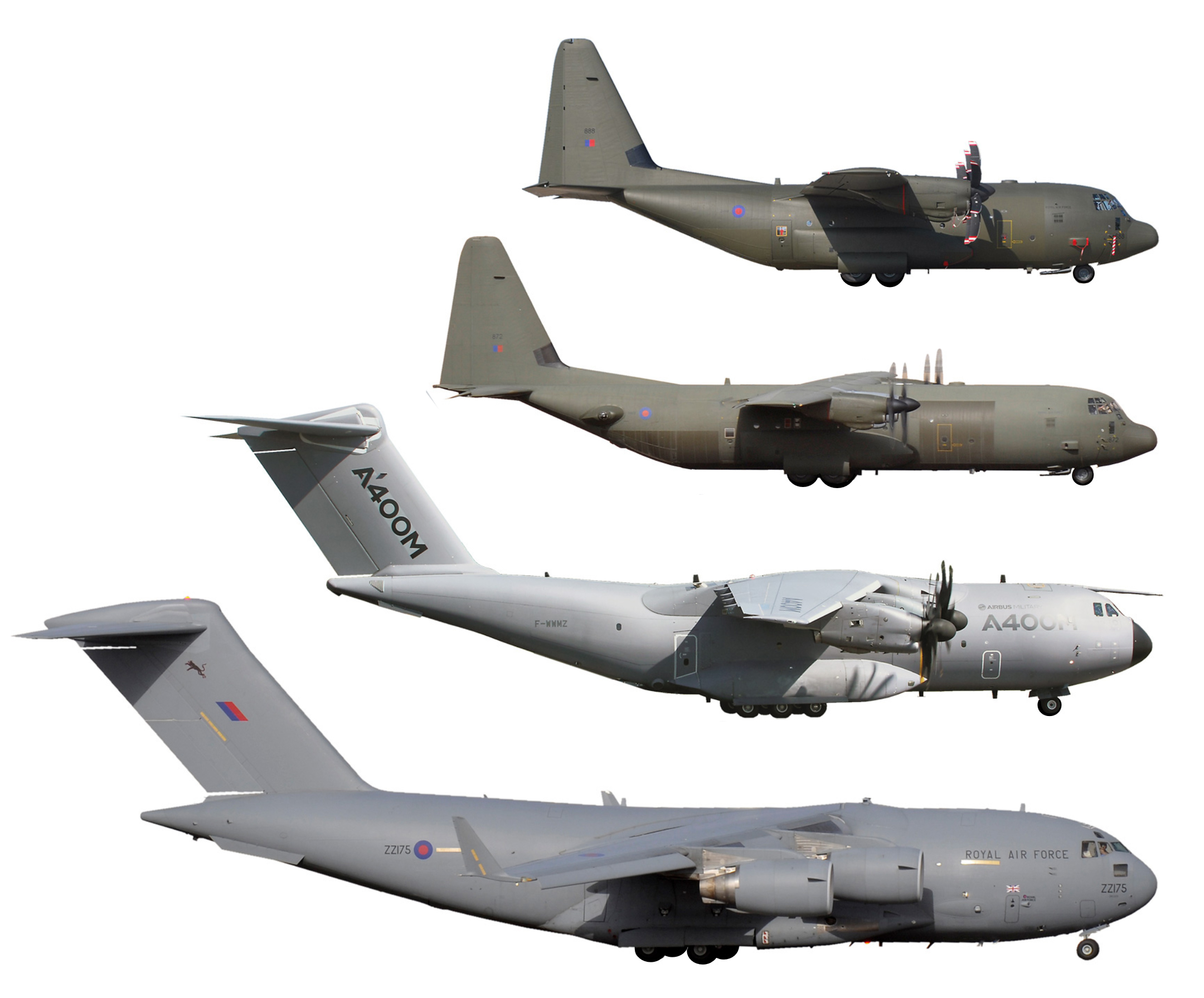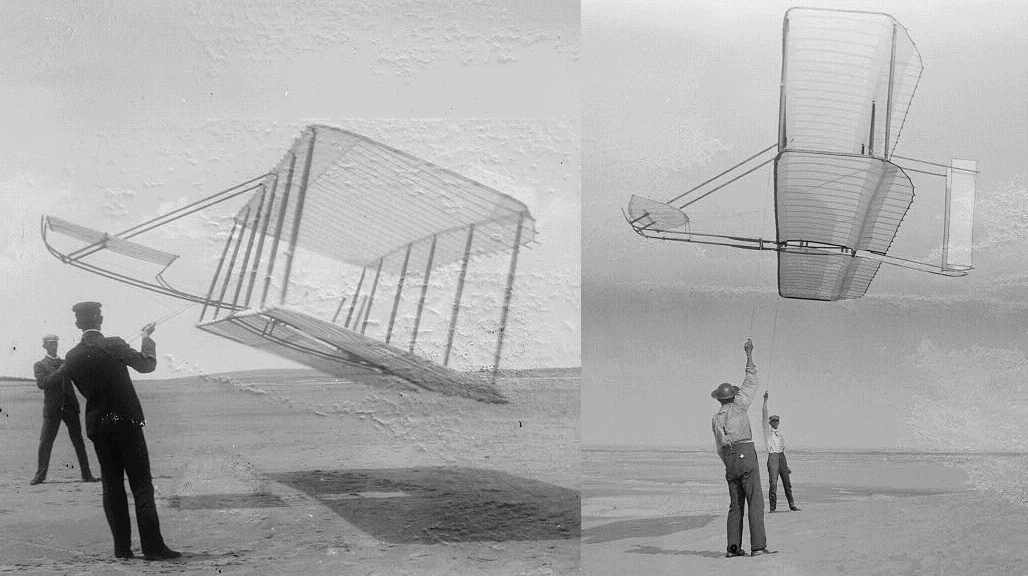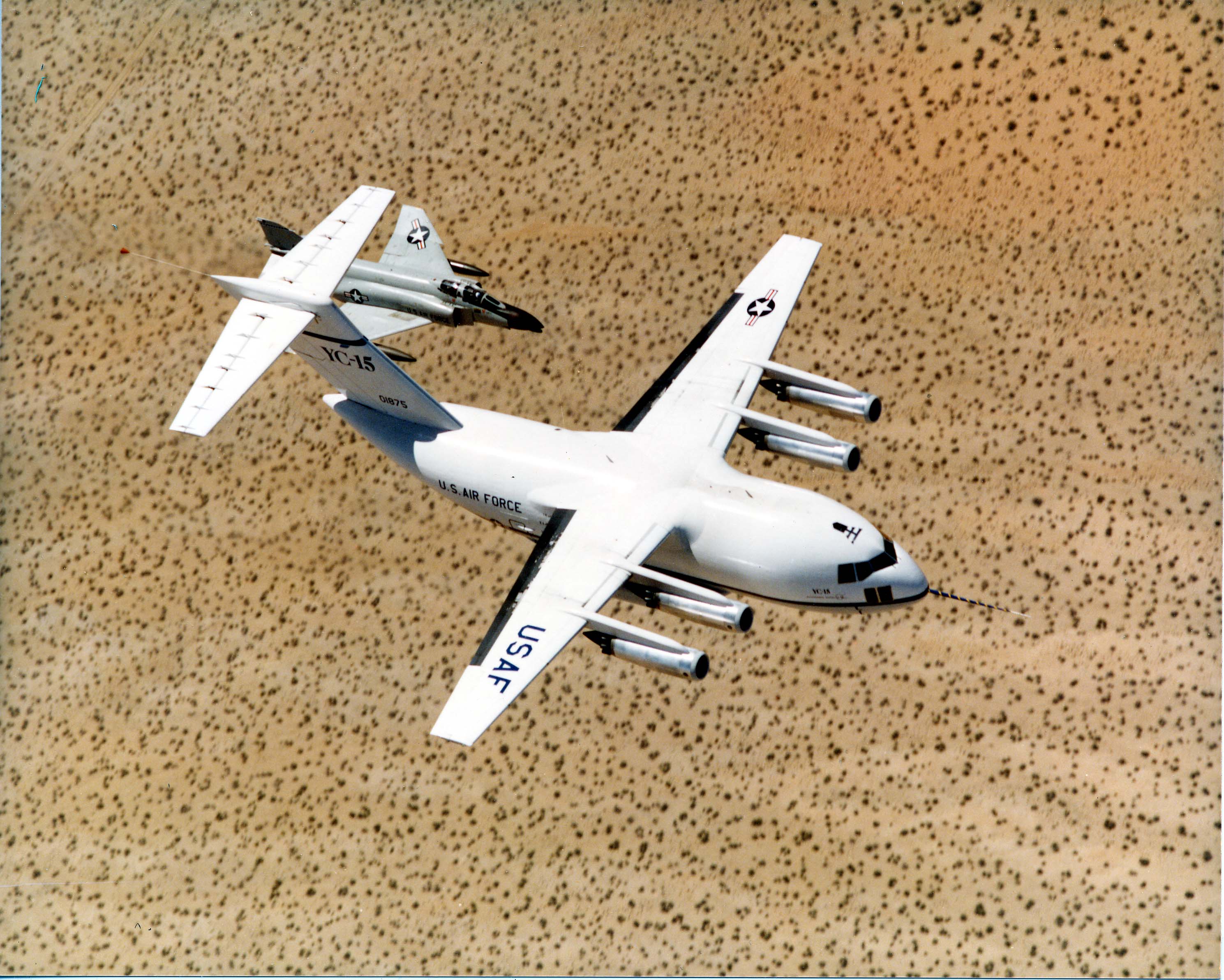|
T-tail Aircraft
A T-tail is an empennage wikt:configuration, configuration in which the tailplane is mounted to the top of the vertical stabilizer, fin. The arrangement looks like the capital letter T, hence the name. The T-tail differs from the standard configuration in which the tailplane is mounted to the fuselage at the base of the fin. Advantages T-tails were common in early jet aircraft. Designers were worried that an engine failure would otherwise damage the horizontal tail. The T-tail is very common on aircraft with engines mounted in nacelles on a Wing_configuration#Number_and_position_of_main_planes, high-winged aircraft or on aircraft with the engines mounted on the rear of the fuselage, as it keeps the tail clear of the jet exhaust. Rear-mounting the engines keeps the wings clean and improves short-field performance. This was necessary in early jet aircraft with less powerful engines. T-tail aircraft can have better short-field performance, such as on the British Aerospace ... [...More Info...] [...Related Items...] OR: [Wikipedia] [Google] [Baidu] |
Airbus A400M
The Airbus A400M AtlasNamed after the Greek mythological figure. is a European four-engine turboprop military transport aircraft. It was designed by Airbus Military (now Airbus Defence and Space) as a tactical airlifter with strategic capabilities to replace older transport aircraft, such as the Transall C-160 and the Lockheed C-130 Hercules. The A400M is sized between the C-130 and the Boeing C-17 Globemaster III; it can carry heavier loads than the C-130 and is able to use rough landing strips. In addition to its transport capabilities, the A400M can perform aerial refueling and medical evacuation when fitted with appropriate equipment. The A400M's maiden flight, originally planned for 2008, took place on 11 December 2009 from Seville Airport, Spain. Between 2009 and 2010, the A400M faced cancellation as a result of development programme delays and cost overruns; however, the customer nations chose to maintain their support for the project. A total of 174 A400M aircraft had ... [...More Info...] [...Related Items...] OR: [Wikipedia] [Google] [Baidu] |
Alaska Airlines Flight 261
Alaska Airlines Flight 261 was an Alaska Airlines flight of a McDonnell Douglas MD-83 plane that crashed into the Pacific Ocean on January 31, 2000, roughly north of Anacapa Island, California, following a catastrophic loss of pitch control, killing all 88 on board: two pilots, three cabin crew members, and 83 passengers. The flight was a scheduled international passenger flight from Licenciado Gustavo Díaz Ordaz International Airport in Puerto Vallarta, Jalisco, Mexico, to Seattle–Tacoma International Airport in Seattle, Washington, United States, with an intermediate stop at San Francisco International Airport in San Francisco, California. The subsequent investigation by the National Transportation Safety Board (NTSB) determined that inadequate maintenance led to excessive wear and eventual failure of a critical flight control system during flight. The probable cause was stated to be "a loss of airplane pitch control resulting from the in-flight failure of the horizontal s ... [...More Info...] [...Related Items...] OR: [Wikipedia] [Google] [Baidu] |
Lockheed C-141 Starlifter
The Lockheed C-141 Starlifter is a retired military strategic airlifter that served with the Military Air Transport Service (MATS), its successor organization the Military Airlift Command (MAC), and finally the Air Mobility Command (AMC) of the United States Air Force (USAF). The aircraft also served with airlift and air mobility wings of the Air Force Reserve (AFRES), later renamed Air Force Reserve Command (AFRC), the Air National Guard (ANG) and, later, one air mobility wing of the Air Education and Training Command (AETC) dedicated to C-141, C-5, C-17 and KC-135 training. Introduced to replace slower propeller driven cargo planes such as the Douglas C-124 Globemaster II and Douglas C-133 Cargomaster, the C-141 was designed to requirements set in 1960 and first flew in 1963. Production deliveries of an eventual 285 planes began in 1965: 284 for the USAF, and a company demonstrator later delivered to National Aeronautics and Space Administration (NASA) for use as an airborne ... [...More Info...] [...Related Items...] OR: [Wikipedia] [Google] [Baidu] |
Advantages
Advantage may refer to: * Advantage (debate), an argument structure in competitive debate * Mechanical advantage, in engineering, the ratio of output force to input force on a system * Advantage of terrain, in military use, a superiority in elevation over an opposing force * Advantage (cryptography), a measure of the effectiveness of an enemy's code-breaking effort Sport * Advantage, in tennis terminology, when one player needs one more point to win the game * Advantage in football and rugby; decision made by officials in a game ''not'' to stop play after a rule infringement, because the opposing side has a better position if play continues normally. See, for example, entries in glossaries of association football, rugby union, and rugby league terms Arts and entertainment * ''Advantage'' (film), a 1977 Bulgarian film *''The Advantage : Why Organizational Health Trumps Everything Else in Business'', book by Patrick Lencioni Music * ''Advantage'' (album), a 1983 post-punk alb ... [...More Info...] [...Related Items...] OR: [Wikipedia] [Google] [Baidu] |
BAC One-Eleven
The BAC One-Eleven (or BAC-111/BAC 1-11) was an early jet airliner produced by the British Aircraft Corporation (BAC). Originally conceived by Hunting Aircraft as a 30-seat jet, before its merger into BAC in 1960, it was launched as an 80-seat airliner with a British United Airways order on 9 May 1961. The prototype conducted its maiden flight on 20 August 1963, and it was first delivered to its launch customer on 22 January 1965. The 119-seat, stretched 500 series was introduced in 1967. Total production amounted to 244 until 1982 in the United Kingdom and between 1982 and 1989 in Romania where nine Rombac One-Eleven were licence-built by Romaero. The short haul, narrowbody aircraft was powered by aft-mounted Rolls-Royce Spey low-bypass turbofans, a configuration similar to the earlier Sud Aviation Caravelle and later Douglas DC-9. It also competed with early Boeing 737 variants and was used by several US carriers, as well as multiple British, overseas and European airline ... [...More Info...] [...Related Items...] OR: [Wikipedia] [Google] [Baidu] |
Hawker Siddeley Trident
The Hawker Siddeley HS-121 Trident (originally the de Havilland DH.121 and briefly the Airco DH.121) is a British airliner produced by Hawker Siddeley. In 1957, de Havilland proposed its DH.121 trijet design to a British European Airways (BEA) request. By 1960, de Havilland had been acquired by Hawker Siddeley. The Trident's maiden flight happened on 9 January 1962, and it was introduced on 1 April 1964, two months after its main competitor, the Boeing 727. By the end of the programme in 1978, 117 Tridents had been produced. The Trident was withdrawn from service in 1995. The jetliner is powered by three rear-mounted Rolls-Royce Spey low-bypass turbofans, it has a low swept wing and a T-tail. Advanced avionics allowed it to be the first airliner to make a blind landing in revenue service in 1965. The initial Trident 1/2 could seat 101-115 passengers over up to . The Trident 3 was stretched by to seat 180 over , and had an additional RB.162 booster engine in the tail. ... [...More Info...] [...Related Items...] OR: [Wikipedia] [Google] [Baidu] |
Gloster Javelin
The Gloster Javelin is a twin-engined T-tailed delta-wing subsonic night and all-weather interceptor aircraft that served with Britain's Royal Air Force from the mid-1950s until the late 1960s. The last aircraft design to bear the Gloster name, it was introduced in 1956 after a lengthy development period and received several upgrades during its lifetime to its engines, radar and weapons, which included the De Havilland Firestreak air-to-air missile. The Javelin was succeeded in the interceptor role by the English Electric Lightning, a supersonic aircraft capable of flying at more than double the Javelin's top speed, which was introduced into the RAF only a few years later. The Javelin served for much of its life alongside the Lightning; the last Javelins were withdrawn from operational service in 1968 following the introduction of successively more capable versions of the Lightning. Development Origins In the aftermath of the Second World War, Britain identified a threat pose ... [...More Info...] [...Related Items...] OR: [Wikipedia] [Google] [Baidu] |
McDonnell F-101 Voodoo
The McDonnell F-101 Voodoo is a supersonic jet fighter which served the United States Air Force (USAF) and the Royal Canadian Air Force (RCAF). Initially designed by McDonnell Aircraft Corporation as a long-range bomber escort (known as a ''penetration fighter'') for the USAF's Strategic Air Command (SAC), the Voodoo was instead developed as a nuclear-armed fighter-bomber for the USAF's Tactical Air Command (TAC), and as a photo reconnaissance aircraft based on the same airframe. An F-101A set a number of world speed records for jet-powered aircraft, including fastest airspeed, attaining per hour on 12 December 1957. They operated in the reconnaissance role until 1979. Delays in the 1954 interceptor project led to demands for an interim interceptor aircraft design, a role that was eventually won by the B model of the Voodoo. This required extensive modifications to add a large radar to the nose of the aircraft, a second crew member to operate it, and a new weapons bay usin ... [...More Info...] [...Related Items...] OR: [Wikipedia] [Google] [Baidu] |
Angles Of Attack
In fluid dynamics, angle of attack (AOA, α, or \alpha) is the angle between a reference line on a body (often the chord line of an airfoil) and the vector representing the relative motion between the body and the fluid through which it is moving. Angle of attack is the angle between the body's reference line and the oncoming flow. This article focuses on the most common application, the angle of attack of a wing or airfoil moving through air. In aerodynamics, angle of attack specifies the angle between the chord line of the wing of a fixed-wing aircraft and the vector representing the relative motion between the aircraft and the atmosphere. Since a wing can have twist, a chord line of the whole wing may not be definable, so an alternate reference line is simply defined. Often, the chord line of the root of the wing is chosen as the reference line. Another choice is to use a horizontal line on the fuselage as the reference line (and also as the longitudinal axis). Some aut ... [...More Info...] [...Related Items...] OR: [Wikipedia] [Google] [Baidu] |
Boeing C-17 Globemaster
The McDonnell Douglas/Boeing C-17 Globemaster III is a large military transport aircraft that was developed for the United States Air Force (USAF) from the 1980s to the early 1990s by McDonnell Douglas. The C-17 carries forward the name of two previous piston-engined military cargo aircraft, the Douglas C-74 Globemaster and the Douglas C-124 Globemaster II. The C-17 is based upon the YC-15, a smaller prototype airlifter designed during the 1970s. It was designed to replace the Lockheed C-141 Starlifter, and also fulfill some of the duties of the Lockheed C-5 Galaxy. Compared to the YC-15, the redesigned airlifter differed in having swept wings, increased size, and more powerful engines. Development was protracted by a series of design issues, causing the company to incur a loss of nearly US$1.5 billion on the program's development phase. On 15 September 1991, roughly one year behind schedule, the first C-17 performed its maiden flight. The C-17 formally entered USAF service on ... [...More Info...] [...Related Items...] OR: [Wikipedia] [Google] [Baidu] |








